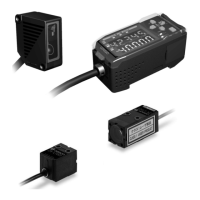Laser Safety
ix
Comparison of Classifications between FDA and ANSI
Label Indications
•EN
Note: Use of controls, adjustments, or procedures other than those specified
herein may result in hazardous radiation exposure.
Class FDA definition ANSI description
Class I/1 Limits applicable to devices that have emissions in
the ultraviolet, visible, and infrared spectra, and
limits below which biological hazards have not
been established.
A Class 1 laser is considered to be in-
capable of producing damaging radia-
tion levels during operation and
maintenance and is, therefore, ex-
empt from any control measures or
other forms of surveillance.
Class IIa/
2a
Limits applicable to products whose visible emis-
sion does not exceed Class I limits for emission
durations of 1,000 seconds or less and are not in-
tended for viewing.
Class 2 lasers are divided into two
subclasses, 2 and 2a. A Class 2 laser
emits in the visible portion of the spec-
trum (0.4 to 0.7
μm) and eye protec-
tion is normally afforded by the
aversion response including the blink
reflex.
Class II/2 Limits applicable to products that have emissions
in the visible spectrum (400 to 710 nm) for emis-
sion durations in excess of 0.25 second, providing
that emissions for other durations and/or wave-
lengths do not exceed the Class I limits. Class II
products are considered hazardous for direct
long-term ocular exposure.
Class IIIa/
3a
Limits to products that have emissions in the visi-
ble spectrum and that have beams where the total
collectable radiant power does not exceed 5 milli-
watts.
Class 3 lasers are divided into two
subclasses, 3a and 3b. A Class 3 la-
ser may be hazardous under direct
and specular reflection viewing condi-
tions, but the diffuse reflection is usu-
ally not a hazard.
Class IIIb/
3b
Limits applicable to devices that emit in the ultra-
violet, visible, and infrared spectra. Class IIIb
products include laser systems ranging from 5 to
500 milliwatts in the visible spectrum. Class IIIb
emission levels are ocular hazards for direct expo-
sure throughout the range of the Class, and skin
hazards at the higher levels of the Class.
Class IV/4 Exceeding the limits of Class IIIb and are a hazard
for scattered reflection as well as for direct expo-
sure.
A Class 4 laser is a hazard to the eye
or skin from the direct beam and
sometimes from a diffuse reflection
and also can be a fire hazard. Class 4
lasers may also produce laser-gener-
ated air contaminants and hazardous
plasma radiation.
Laser warning label
EN/IEC warning label
Explanatory label with specified wording

